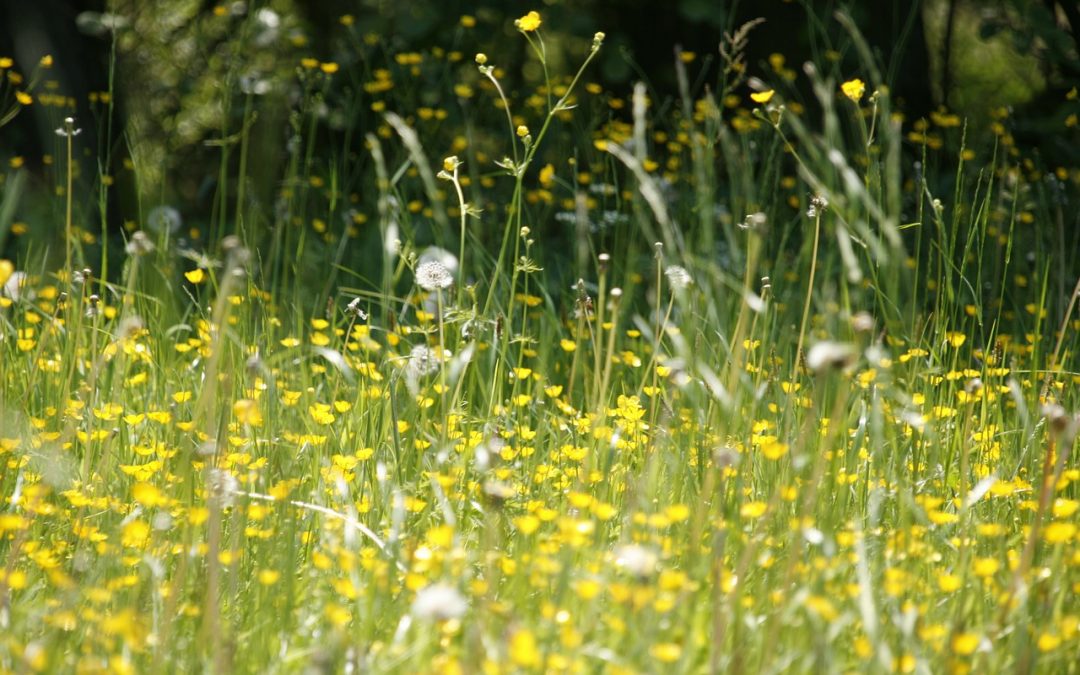Whether you call it hay fever or allergic rhinitis, grass allergies can make spring and early summer miserable for allergy sufferers. Knowing the causes of your grass allergies may make it easier to deal with them.
What causes grass allergies? The simple answer in most cases is grass pollen. Pollen allergies are the most common. Plants, including grasses, release pollen to fertilize other plants. The Weed Science Society of America says, “For the 40-50 million allergy sufferers in America, inhaling airborne allergens can produce a variety of allergic symptoms. Because pollen grains are small and buoyant, they can remain airborne for hundreds of miles.” Breathing in pollen triggers an allergic reaction. and this can cause your immune system to attack.
Grass Allergy Symptoms
- Nasal congestion or stuffy nose
- Runny nose
- Sneezing
- Itchy throat
- Red, itchy or watery eyes
- Coughing
- Headaches
- Chest tightening
- Trouble breathing
Grass allergies can also cause rashes. This often happens when the skin comes into direct contact with grass. The rashes are usually raised welts or hives, sometimes red and itchy. This kind of grass allergy can also affect your pets.
In rare cases, a grass allergy can cause a reaction similar to anaphylaxis, which is defined as an acute reaction to an antigen. This can occur when grass proteins enter the bloodstream through scraped skin.
Types of Grasses that Trigger Allergies
- Bermuda
- Kentucky bluegrass
- Timothy grass
- Rye
- Orchard
- Johnson
- Sweet Vernal
Grass pollen season usually happens in northern climates of the United States in late spring or early summer. Grasses can pollinate in the southern United States throughout the year, triggering allergy symptoms in any season.
Treatments for Grass Allergies
When it comes to grass allergies, you can treat and decrease the symptoms. The best treatment for is prevention. This means avoid coming into contact with grasses that trigger an allergic reaction. This can be challenging since unlike food allergies, it’s nearly impossible to avoid spending time outdoors. Here are some tips for times when avoiding grass is impossible:
Limit Exposure
Have someone else mow your lawn, and keep your lawn as short as possible. Shorter grass usually releases less pollen. Shield your skin and eyes from grass pollen by wearing protective clothing. This includes long-sleeved shirts, pants, hats, and sunglasses. This is especially important when you know you’ll be in contact with grass. Dry laundry inside rather than outside. Clothes, towels, and sheets can attract pollen.
Watch Pollen Counts
You can track pollen counts in your area online or through your local forecast. On days when the grass pollen count is high, stay inside if possible. If that’s not possible, consider wearing a face mask. This will help protect you from inhaling pollen and other allergy-causing particles.
Keep Pollen Outside
To keep from bringing pollen into your home, remove shoes and change your clothes after spending time outdoors. Showering is also a good idea to wash pollen from your skin and hair. Use a towel to wipe off pets before allowing them inside, and keep them off your furniture and bed. Wash sheets and vacuum carpets at least once a week.
Keep doors and windows closed during lawn mowing and yard work sessions, and when pollen counts are high. If you have air conditioning, replace the filters every few months. Consider using filters designed to trap smaller particles such as pollen. These are called “high energy air particulate filters,” or HEPA for short.
Treat Allergy Symptoms
For mild allergic reactions and seasonal allergies, you can use over-the-counter medications to treat the symptoms. Options include antihistamines, decongestants, and nasal sprays. Some of these may have side effects such as drowsiness. For more severe or longer-lasting problems, you may want to ask your doctor for help. Possible treatments include nasal corticosteroid sprays, prescription antihistamines or decongestants, and allergy immunotherapy. If you’re experiencing chest tightness or trouble breathing, get medical attention right away.
Allergy shots are the most common and most effective type of allergy immunotherapy. The shots, called subcutaneous immunotherapy, deliver a small amount of an allergen into the skin of your arm. The amount of allergen gradually increases over time. This helps your body build up a tolerance to the allergen. Because of the slight risk of anaphylactic shock, allergists administer the shots in their office. The course of treatment lasts several years, but it has proven effective in reducing or eliminating allergic reactions. Allergy tablets (sublingual immunotherapy) work in a similar way. Instead of shots, tablets that dissolve under the tongue deliver the allergen.
Knowing the causes of grass pollen allergies and ways to help prevent them can go a long way in easing your symptoms. It may just help you get through allergy season with a lot less suffering.

